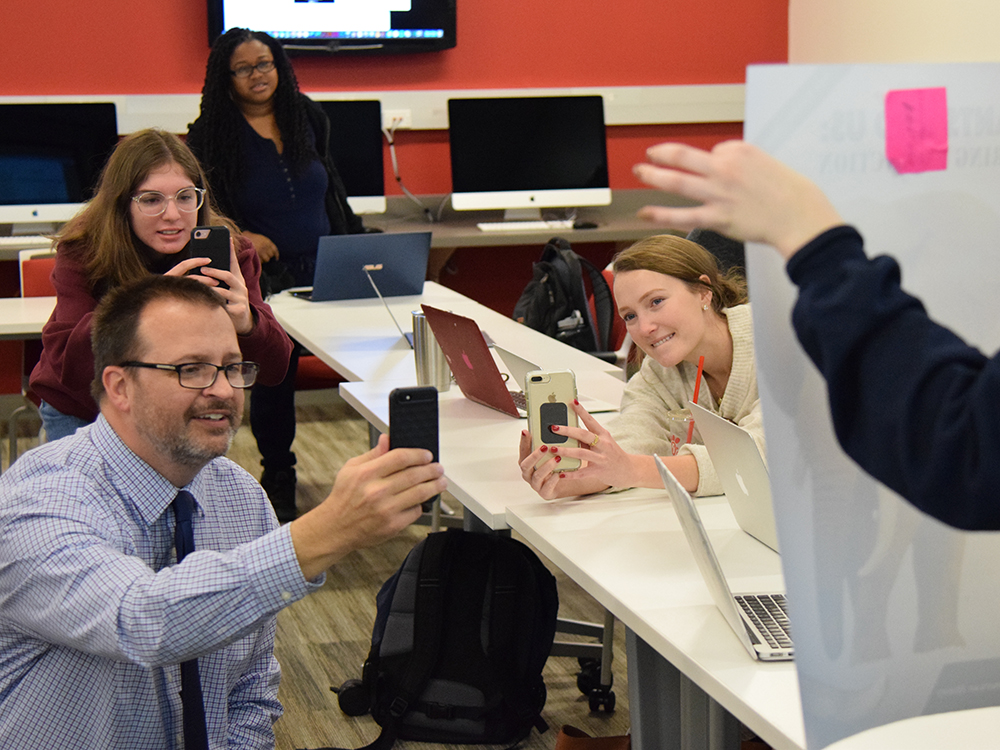Ben Hannam, associate professor of communication design, and his Design of Visual Images students incorporated augmented reality into their interactive posters now on display in Schar Hall.
Students in Ben Hannam’s Design in Visual Images class were able to bring another dimension to their coursework this semester through augmented reality.

“With a print ad, designers try to capture this moment of highest energy in the poster,” said the associate professor of communication design. “The challenge for this project was to capture that moment of highest energy, yes, but then also continue to tell that story through augmented reality.”
Augmented reality is a technology that superimposes a computer-generated image onto a user’s view of the world, providing a more immersive experience. Hannam’s students were given a challenge: first, to capture the moment of highest energy. Second, to explore how augmented reality could be used to deepen audience engagement with their product or service.
“You hear the word augmented reality, and it feels really daunting,” said senior Rene Janis. “I remember when we were all assigned this assignment, we wondered, ‘What is this going to entail?’ But it’s something that anyone can do. It’s achievable.”
Students used an app called Artivive to create posters with a video component. The video is played when scanned by a user’s phone through the app.

The video component of the project challenged the students, as many of them were not familiar with video editing. Senior Arianne Payne said it forced the student designers to think and work outside their comfort zone.
“I think that as graphic designers we mostly work in two dimensions,” Payne said. “For us to think in different modes, I think it really helps us expand our skill set and expand the kinds of work we can do.”
Funded by the Academic Technology Committee, the projects from Hannam’s class are on display through Wednesday, Dec. 11, on the second floor of Schar Hall.



